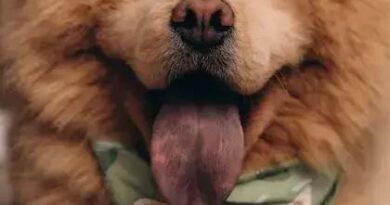O que é expected behaviors
What is Expected Behaviors?
Expected behaviors in dogs refer to the typical actions and reactions that canines exhibit in response to various stimuli or situations. Understanding these behaviors is crucial for dog owners, trainers, and enthusiasts, as it helps in fostering a harmonious relationship between humans and their furry companions. These behaviors are often influenced by a dog’s breed, age, training, and socialization experiences, making it essential to recognize what is considered normal for each individual dog.
Understanding Canine Body Language
One of the key components of expected behaviors in dogs is their body language. Dogs communicate primarily through non-verbal cues, and being able to interpret these signals is vital for understanding their emotional state. For instance, a wagging tail can indicate excitement or happiness, while a lowered tail may signify fear or submission. Observing a dog’s posture, ear position, and facial expressions can provide insights into their feelings and intentions, helping owners respond appropriately to their needs.
The Role of Socialization in Expected Behaviors
Socialization plays a significant role in shaping expected behaviors in dogs. Puppies that are exposed to various environments, people, and other animals during their critical development period are more likely to exhibit well-adjusted behaviors as adults. Proper socialization helps prevent behavioral issues such as aggression or fearfulness, allowing dogs to navigate different situations with confidence. Owners should prioritize socializing their dogs from a young age to promote positive interactions and reduce anxiety.
Common Expected Behaviors in Dogs
There are several common expected behaviors that dog owners can anticipate. These include basic commands such as sit, stay, and come, which are fundamental for obedience training. Additionally, dogs often display behaviors like barking to communicate, digging as a natural instinct, and chewing as a way to explore their environment. Recognizing these behaviors as normal can help owners manage them effectively and provide appropriate outlets for their dogs’ energy and instincts.
Behavioral Changes and Their Causes
It is essential to note that expected behaviors can change due to various factors, including health issues, changes in the environment, or alterations in the owner’s routine. For example, a previously well-behaved dog may start exhibiting signs of anxiety or aggression if they experience a traumatic event or if there are new additions to the household. Understanding the reasons behind these behavioral changes is crucial for addressing them appropriately and ensuring the dog’s well-being.
Training Techniques to Encourage Expected Behaviors
Training techniques play a vital role in reinforcing expected behaviors in dogs. Positive reinforcement, such as treats and praise, is an effective method for encouraging desirable actions. Consistency in training is also key; using the same commands and rewards helps dogs understand what is expected of them. Additionally, engaging in regular training sessions can strengthen the bond between the dog and owner, leading to a more well-behaved pet.
Recognizing Behavioral Issues
While many behaviors are expected, some may indicate underlying issues that require attention. Signs of distress, such as excessive barking, destructive chewing, or withdrawal, can signal that a dog is experiencing anxiety or discomfort. Owners should be vigilant in recognizing these signs and seek professional help if necessary. Early intervention can prevent more severe behavioral problems from developing and ensure a happier, healthier dog.
Creating a Positive Environment for Expected Behaviors
Creating a positive environment is essential for encouraging expected behaviors in dogs. This includes providing a safe and comfortable space for the dog to relax, engaging in regular exercise to expend energy, and offering mental stimulation through toys and training activities. A well-structured routine can also help dogs feel secure and understand what is expected of them throughout the day, reducing anxiety and promoting good behavior.
The Importance of Patience and Understanding
Lastly, patience and understanding are crucial when it comes to expected behaviors in dogs. Each dog is unique, with its own personality and learning pace. Owners should be prepared to invest time and effort into understanding their dog’s specific needs and behaviors. By fostering a supportive and nurturing environment, owners can help their dogs thrive and develop the expected behaviors that lead to a fulfilling companionship.




